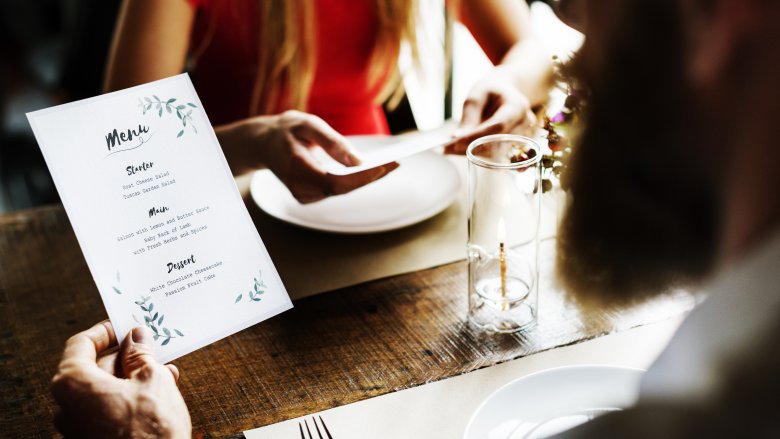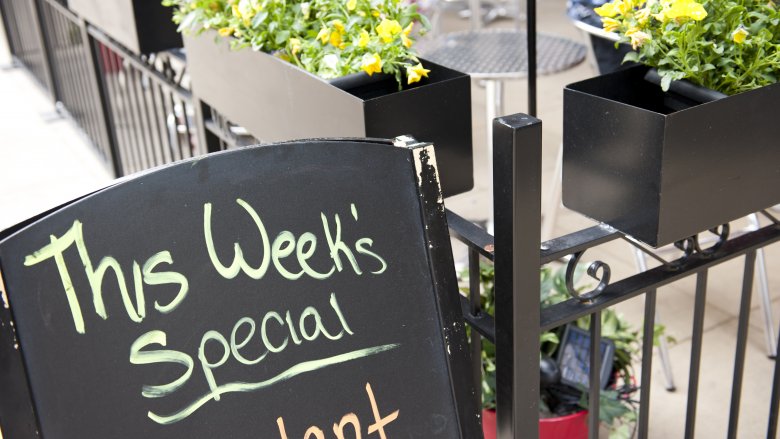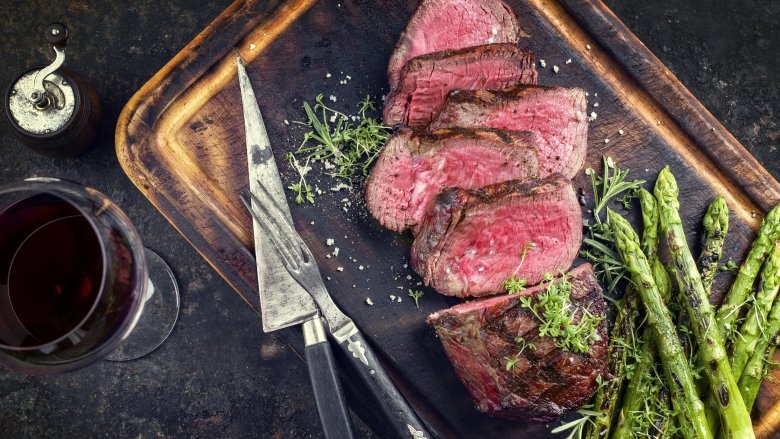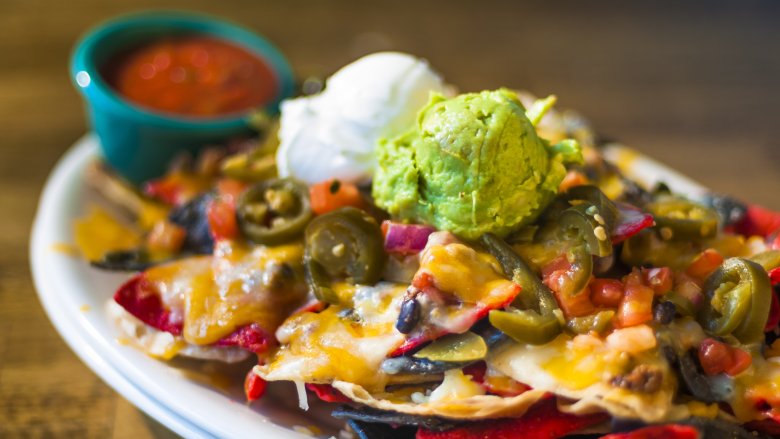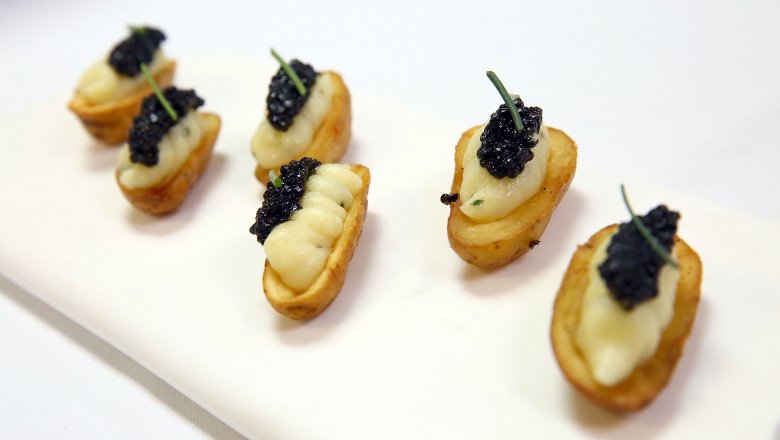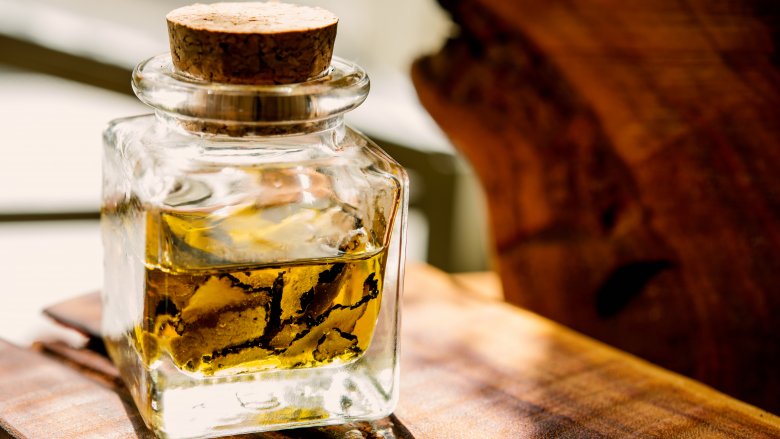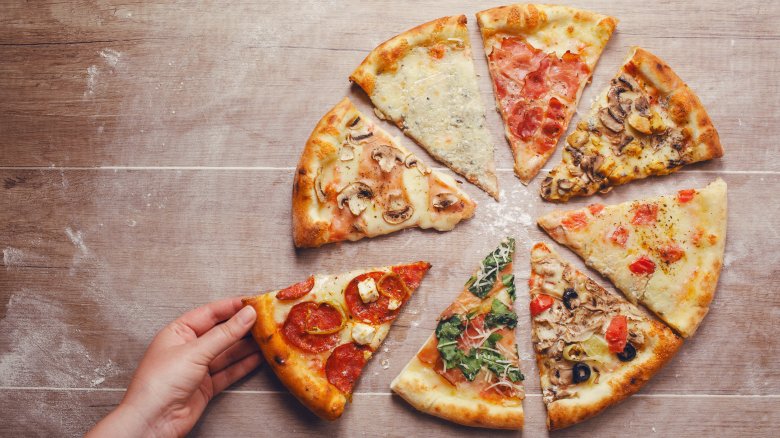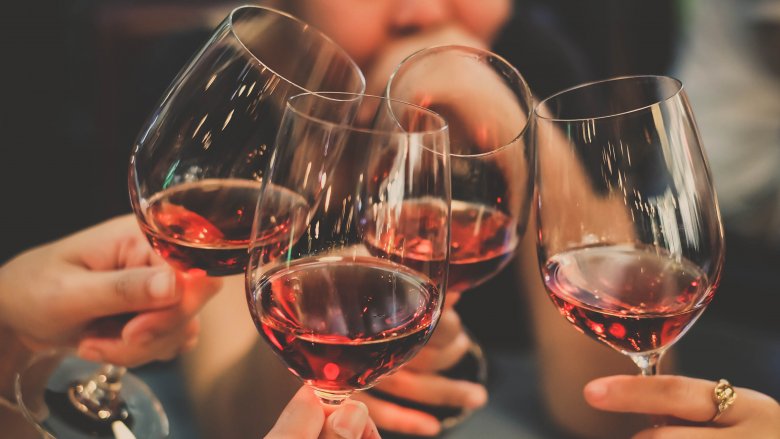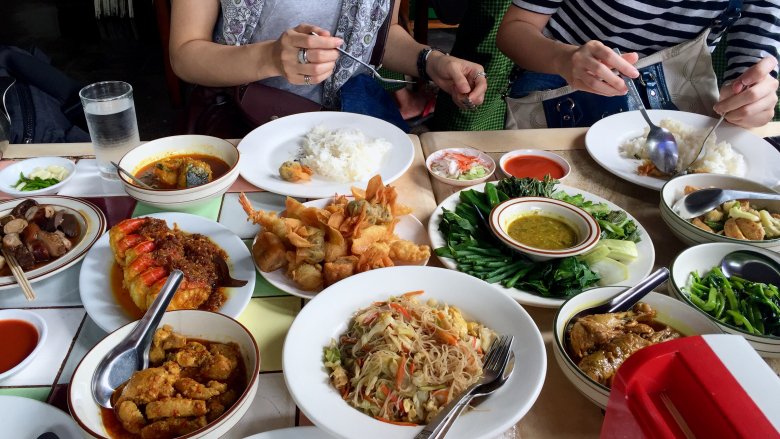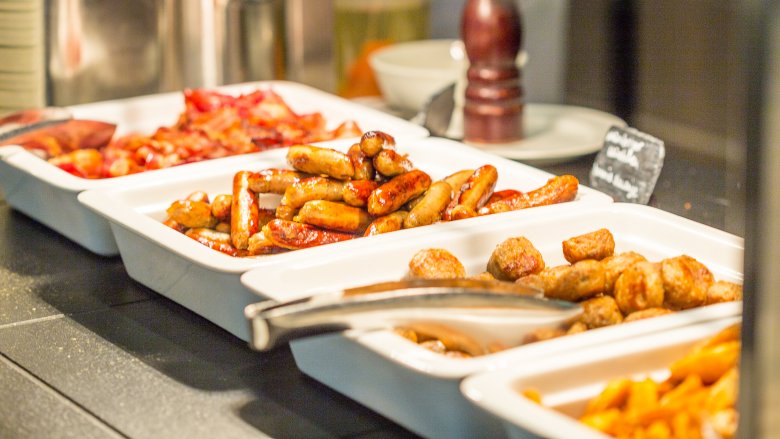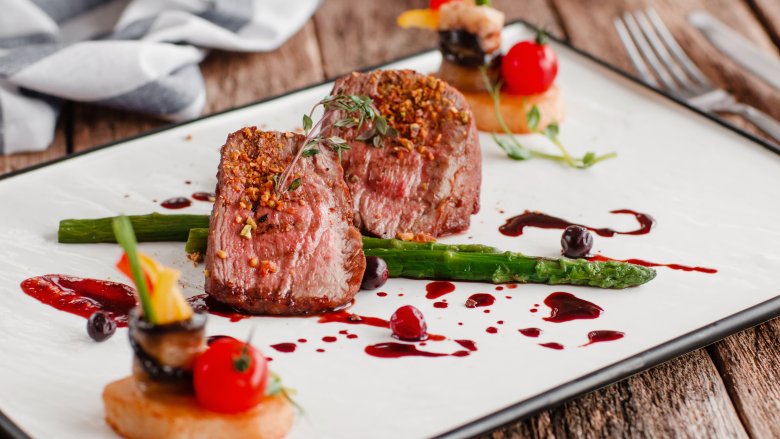Signs Your Meal Isn't Worth The Price Tag
I love everything about going to a new restaurant. I love taking in the atmosphere, music, and fellow diners. However, one aspect I don't pay a lot of attention to is the price list.
I don't want to spoil a perfectly good night out worrying about the cost. I also don't want to bias myself with the prices. I'd rather pay a little more for that juicy burger I've been craving, as opposed to settling on the slightly cheaper dish.
While this may help my enjoyment of the experience, there's a very good chance I've been ripped off once or twice. Fortunately, there are signs we can all be on the lookout for to avoid being charged too much. From brunch buffets to American Kobe beef, certain meals are rarely worth the price tag.
It's on special
Would you like to hear tonight's specials? Most of us answer yes to this question in restaurants. As a diner, I've always assumed that the special is a new and exciting dish the chef is experimenting with. It feels fun to try the latest and greatest. However, there's a good chance the special is just full of ingredients the restaurant can make the biggest profit from.
The specials are usually the most expensive dishes on the menu, and it can be hard to tell if it's really worth the money. The restaurant will most likely use exotic terms and fancy cooking styles, but remember that the specials are there to turn a profit. So even if the carnitas are slow-roasted or the gnocchi comes in a browned butter sauce, don't assume the specials are the best value.
The menu says Kobe
Kobe beef is supposed to be one of the best cuts of beef in the world. So it's weird that your local bistro is able to offer it in their appetizers. That's probably because it's not real Kobe beef from Japan. Most of the American restaurants who boast Kobe beef burgers and sliders do not actually offer Kobe. They may offer a different quality beef, but don't think paying $50 for a burger is worth it.
There is no such thing as an "American version" of Kobe beef, so don't shell out just for the name. While it's possible you're ordering real Kobe, chances are, you're not.
When you have to pay for every extra
You know when you're at a restaurant, and the burger seems like an economical choice — that is until you start adding the extras? After adding cheese, bacon, and guacamole, you would've been better off getting a higher quality, more expensive dish.
Restaurants mark up the cost of these extras by as much as 500 percent. Be on the lookout, especially when you order a burger, pizza, or burrito. All of these items are way better (and more over-priced) with the extras. For example, adding that heavenly dollop of guac to your burrito bowl usually costs you about $2. However, it only costs the restaurant 52 cents.
There are exotic ingredients
Hearing about exotic ingredients, such as truffles or caviar, always sounds like the dish should be very high in quality and cost. Restaurants know that and use it to their advantage. By sprinkling in a tiny amount of a valuable ingredient, they can upcharge you for a pretty normal dish. "People are thrown off the scent of seeking out value with foods they are unfamiliar with and don't know how to cost," Pennette told Forbes.
If you're obsessed with the taste of caviar, then go for it. However, if you're intrigued by a dish simply because it contains a few fish eggs, move on to something else that you'll really love.
It contains truffle oil
Truffle oil seems to be everywhere these days. But most truffle oil contains very little actual truffle, if any.
Many truffle oils only claim to contain a truffle "essence" or "aroma" in the ingredient list. This truffle essence is actually just a man-made chemical. Lawsuits have been brought against retailers using this chemical in order to upsell their truffle products. "In the law, you can advertise something honestly, and it still can be considered deceptive marketing because the reasonable consumer is not an expert in this area," Bonnie Patten of the nonprofit organization Truth in Advertising told The New York Times.
Next time you're eyeing up the truffle oil at Trader Joe's, flip the jar over and take a peek at the ingredient list. Chances are you're buying truffle "aroma" oil, rather than the real deal.
Your pizza is pricey
Have you ever stopped to think about the ingredients that go into making a pizza? The dough is essentially flour and water with a little yeast. The sauce contains tomatoes, spices, and water. Sure there are toppings and cheese, but what are we really paying for?
Think about your favorite pizza toppings. Chances are they aren't that expensive. Yet pizza prices can range from the very cheap to high-end. The actual dough and sauce are easy and cheap to prepare.
Because most pizzas cost only a few dollars to make, but are then sold for at least double, triple, even quadruple that, you may be better off making your own pie at home. So roll up your sleeves, get out your rolling pin, and call a few friends. It's pizza night at your house.
Your wine is the second-cheapest
This little tidbit was fascinating to me. When I order wine from the menu, I'll usually stay away from the expensive glasses, but I won't order the absolute cheapest one on the menu either. I've always assumed I'm getting the best value when I stay middle of the road.
It turns out I'm not the only one who does this, because restaurants plan for it and purposely mark up the second-cheapest bottle of wine on the menu. They know that we diners don't want to spend all of our food budgets on wine, but we also don't want to look cheap. Marking up the second-cheapest bottle of wine is the best way to make money off of us. Next time you're out with friends, go ahead and order the cheapest glass they have. You'll be getting the real value.
Your meal is served family style
I've never been a big fan of family style dining. I know what I like, and I'm truly not that big on sharing. I like to eat slowly, so I always worry that all the good food will be taken while I munch on my appetizers. Serving family style is an easy way for restaurants to make more money. Because they only have to make bigger portions of the same dishes, they save time and effort.
Family style dishes can also have a higher markup, simply because diners won't notice. "Diners have a hard time deciphering value when portion sizes become more abstract," founder of CB5 Restaurant Group Jody Pennette told Forbes. So next time you're out with friends, just order what you want and ditch the family style portions.
You're at a brunch buffet
Brunch buffets are a favorite of restaurants, because they're so easy. Just throw some pre-made food in the warmer and upcharge everyone for the brunch price. Most of us would be much better off cooking the eggs ourselves.
"Choose labor-intensive, time-consuming, complex dishes, that call for hard-to-find ingredients," restaurant consultant Clark Wolf told Forbes. "If you can whip it up yourself in 20 minutes with stuff from your kitchen cupboard — do that."
It's from a college cafeteria
From what I remember of college cafeterias, they are not a fine dining experience. While the quality of the cuisine may not be high, the prices are. If you've ever eaten a meal in a college cafeteria, there's an excellent chance you were overcharged.
In the last ten years, the cost of college dining plans have gone up an average of 47 percent, while the overall cost of food has only gone up 20 percent. Colleges need to make money, and meal plans are a quick way to make some extra cash. The average college dining plan is $4,300 for a semester, which breaks down to about $7.50 per meal. Sometimes that will be worth it, but oftentimes it's not. If you're not much of a breakfast person, you'll be paying the same for an apple as the guy at the next table having a full farmer's breakfast.
Another reason that colleges overcharge is that they have to become competitive with their food. All schools want to recruit the best students, and many of them want the best cafeterias. "This is the demand of some students, and yet all students ultimately pay the price for this," Temple University professor Sara Goldrick-Rab told Time.
The dish is obscenely expensive
If you've ever been to Las Vegas, then you know obscenely expensive food. I remember seeing a $100 burger on the menu at a mid-scale restaurant on the strip once. I had assumed it must be the very best quality, but that may not be true. Having crazy expensive items on the menu serves two purposes for restaurants.
Having an outrageously expensive dish not only makes the other dishes look like a good deal in comparison, it also makes diners a little curious. "Having an outrageously expensive item is both likely to get publicity for a restaurant, and will also get people to spend more," psychologist and author Charles Spence told The Guardian. "People think 'I wonder if anyone ever orders that?', without realizing that its true purpose is to make the next most expensive item seem cheaper."
